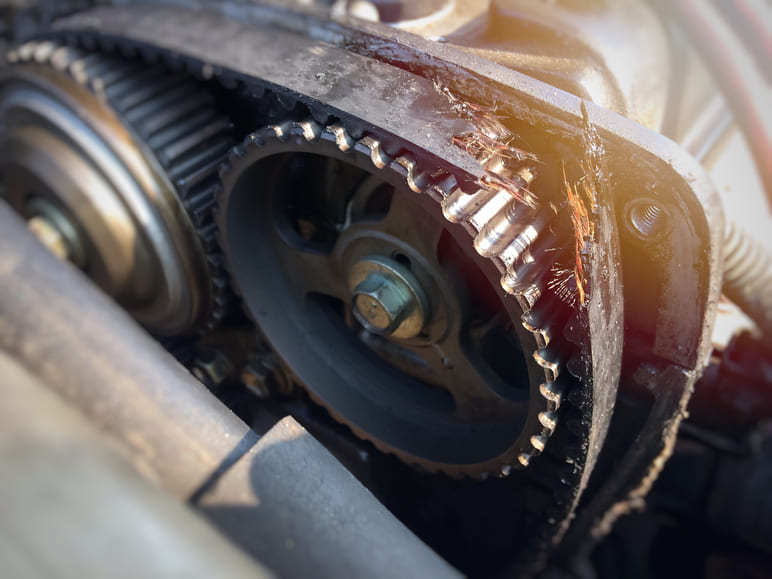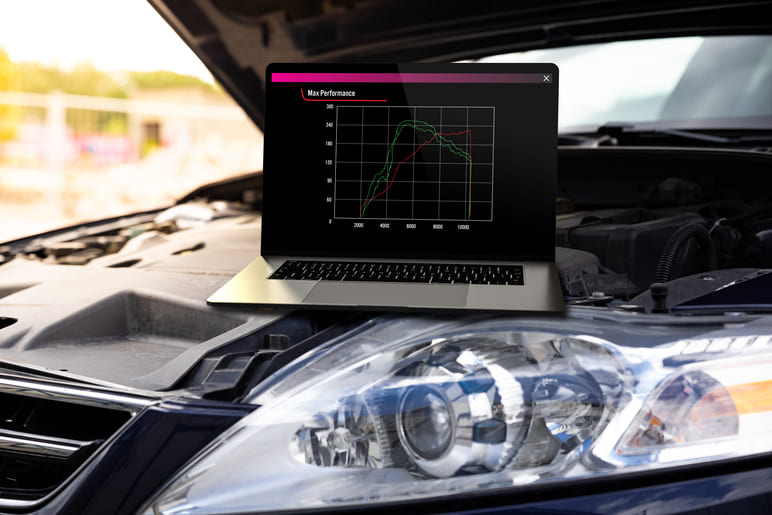
If you timing belt breaks, you could be left with some huge repair costs. But how do you know when you should replace the timing belt? The guide below gives you all the information you need about your timing belt and when it is time to get a new one fitted.
Need to know:The timing belt, also known as the cambelt, is a rubber belt in the car’s engine and it might seem like an insignificant part, especially because it’s often hidden away and not visible. It is, however, one of the key components of an engine. Having a timing belt in poor condition, or one that might snap at any second, could be disastrous: failing to replace a worn-out belt can result in complete breakdown or catastrophic engine failure. The timing belt, like the name suggests, keeps everything in time. If your car doesn’t have something keeping the valves and pistons in sync, opening and closing when they need to, you’re going nowhere fast.
What does it do?

The timing belt is a rubber belt with small teeth which connects the crankshaft to the camshaft in order to control the ignition timing and cam timing for the engine. It makes sure that the engine’s valves open and close at the right time during the ignition cycle and ensures correct combustion in the engine. Essentially, if the belt isn’t there or isn’t working properly, the car won’t start.
What can go wrong with the timing belt?
Like all rubber components, there’s a chance that overtime the material will be worn down which could lead to the it being stretched or thinned down, tearing, or even completely snapping or cracking. It’s also possible that the teeth become ‘stripped’ or worn down, leaving a smooth section of belt where the drive cog will slip.
If this happens in an interference engine, the valves and pistons won’t be moving in sequence anymore and could clash, causing a lot of very expensive damage to the engine. For older vehicles, the repair costs often outweigh the cost of the vehicle itself.
What makes this even more frustrating is that there are often very few signs that the timing belt is about to go, which makes it even more crucial that you consider getting it checked out and changing it in good time.
What are the tell tale signs of a damaged timing belt?
Strange noises: A noisy cambelt when the car is running, particularly when the vehicle is first started and the engine is cold, could be a sign that the timing belt is almost at breaking point. You might hear a squealing, hissing, grinding, rattling, chirping or rumbling. If your belt is too loose, you’re likely to hear a squealing and this could indicate that it’s worn down and needs replacing.

Smoke from the engine: Steam or water vapour coming from your exhaust in wintertime isn’t an issue at all, If it is wintertime and cold outside, but smoke if billowing out of your tailpipe this could be a real issue with your timing belt. The top of every valve has two holes which are responsible for letting out the exhaust and letting in air. Since the opening and closing of these holes are synchronized with how the cylinders move and how the camshaft rotates, a worn-out timing belt will mean that air will be let in at inappropriate times. The result will be lots of smoke coming out of your exhaust system.
Starting issues: Since the timing belt is partly responsible for the combustion in the engine, having a broken timing belt might mean the car doesn’t start at all. This is because without the belt, the camshaft will not rotate when the crankshaft turns. If you watch the camshaft while turning the crankshaft this should be clear. You know the belt is broken if the camshaft does not turn.
Visual signs: Slightly harder than the others because of its placement in the engine, checking for visual signs of wear and tear can also let you know if it’s time for a new belt. If the underside of the belt looks smooth, glazed, or glossy this is a good indicator that it has been through a lot and is getting worn down. The rubber will have become hard and the belt doesn’t have the flexibility it needs. Some signs are much more obvious, such as cracking or fraying and these kinds of belts should be replaced immediately.
Is there any way to prevent the timing belt breaking?
With your car’s timing belt it isn’t a question of if it will break, but a question of when it will break.
Aside from replacing the belt with a new one, there isn’t a lot you can do to prevent damage to the timing belt. It’s critical to get the belt looked at regularly by a mechanic when you take the car in for servigin or to inspect it yourself.
How often should you change it?

Unfortunately, there’s no ‘one size fits all’ when it comes to how frequently a cambelt should be replaced. It depends a lot on the make of the car and the mileage driven.
Often manufacturers will suggest both a mileage and time based change, depending on which comes first. The range varies a lot: some might suggest the belt is due to be changed after 50,000 whereas other companies might feel 100,000 miles is the limit. In terms of time this could be 4-5 or 10 years.
If you’re in doubt and think your timing belt might need changing, consult your vehicle’s handbook and this will tell you how frequently it should be changed to avoid any pricey repairs. That said, the interval
that the manufacturer suggests should be the absolute maximum and changing the cambelt earlier is advised to avoid serious mechanical damage. You can also have your car inspected at a garage to check if your cambelt is worn down and if so, how close it might be to breaking.








Comment